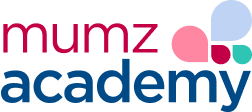More and more nursery’s and schools are labelling themselves as ‘Reggio’ or base their philosophy on the Reggio Approach. Whilst this all sounds exciting and wonderful; do you really understand what it means? Secondly, is what they’re calling ‘Reggio’ actually accurate?
Reggio Emilia is a beautiful town in Italy that wanted a progressive and cooperative approach to education for their children – this means that ‘Reggio’ is unique to this town. It cannot be picked up and slotted in elsewhere, so anyone using Reggio is simply being inspired by what happens in this quaint town in Italy. A Reggio inspired approach needs to meet the needs of each specific culture and community, it will look and feel different in every setting – despite this, there are key fundamental principles to look for.
So here are the key principles to think about…
– Children are seen as capable of constructing their own learning (children are driven by their interests and natural curiosity to know more)
– Children are communicators. Communication happens in a huge variety of ways. Communicating is a process and can be seen through play, art, sounds and language. Language is encouraged to be used to investigate and explore, to reflect and to question.
– Children are listened too. Learning is collaborative, adults don’t just answer questions but work together with the child to find the solution. The child’s voice is clear in all learning.
– Children learn and build an understanding of themselves and the world around them by interacting with others. Learning occurs in small groups where each child is equally valued and heard. Children find out the answers to their questions through investigations and projects, working together without an adult just answering it for them.
– Adults (teachers) role is to guide and mentor the children. Teachers observe, listen, and actively look for child’s interests as seen in their play and provide opportunities for the child to further explore their interest or idea.
– Learning isn’t planned in advanced; it emerges alongside a child’s interests and it’s direction is led by the child.
– Environments are crucial – they are considered to be the third teacher. Environments can inspire children, every material and item in the room is considered for it’s purpose to encourage children to think more deeply about their interests or to ask questions. Environments have spaces that encourage children to collaborate and communicate using authentic tools and materials. Children learn to respect and care for the environment alongside the teacher.
– There should be an emphasis on documenting what children are thinking. This happens through careful documentation of children’s thoughts and thinking process
– thoughts should be made visible through photos, quotes from children, visual representations (children’s art etc) and should show the full learning cycle.
– Children can express their thoughts and understanding in a huge variety of ways, it isn’t all about talking. These languages can include, different art, music, sculpture and movement. Children should have access to these languages regularly as they engage different senses and help them to express their learning.





